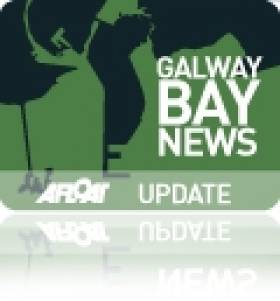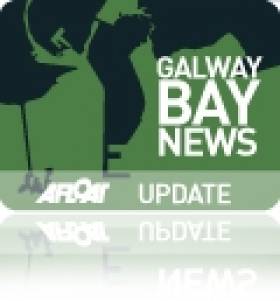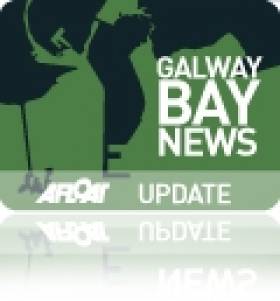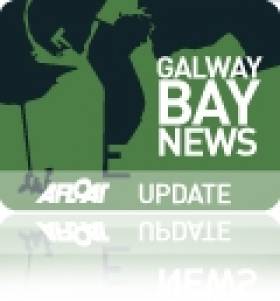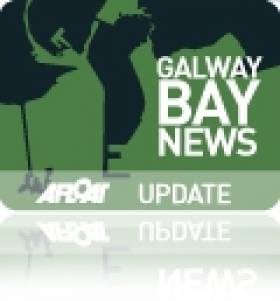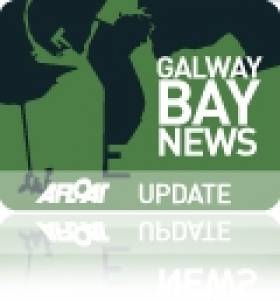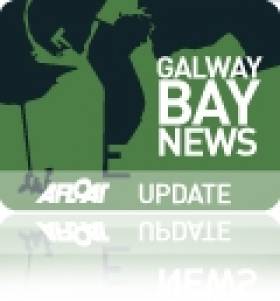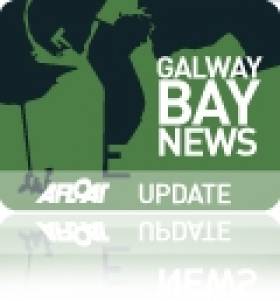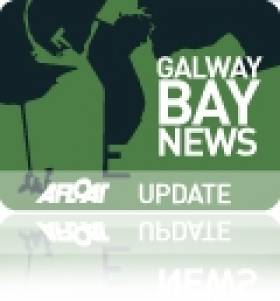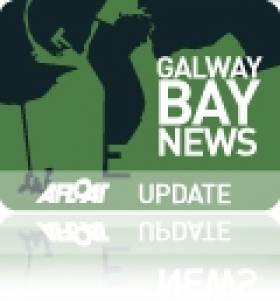Displaying items by tag: Galway Harbour News
Limerick Objections to Expansion of Galway Port ‘Spurious’ Says T.D.
#PortRivals – Objections by Shannon Foynes Port Company (SFPC) to the expansion of Galway Port are "spurious", "without any sound basis", and motivated by "self-interest" says Independent Galway West T.D. Noel Grealish.
Dep Grealish launched a blistering attack on the Limerick based company during an oral hearing by An Bord Pleanála into the planned €126m port redevelopment in Galway city, accusing the SFPC of objecting to the proposed development "simply for their own financial gain".
"Foynes seem to think they have a God-given right to take all the business along the western seaboard," he said. "They don't want any other port to compete with them in any way and they are afraid if Galway gets the go-ahead they will be at a loss."
For more on this story, the Galway Advertiser reports here and follows a previous report elsewhere, which referred to SPFC as one of several opposing the proposed project.
Galway Harbour CEO Cites Port’s Redevelopment Necessary to Stop Decline
#Redevelopment - Galway Harbour could face terminal decline unless a proposed €126m redevelopment is given the go ahead, a full oral hearing was told of about the project, reports yesterday's Irish Times.
The CEO of Galway Harbour, Eamon Bradshaw, told the An Bord Pleanála hearing that ships are sometimes left sitting off Mutton Island for long periods because the current port was effectively only open for four hours during any 24-hour cycle.
Mr Bradshaw pointed out that the new national ports policy identified the harbour as a strategic regional hub for petroleum, while its current location close to the city centre limited its potential for further expansion. The proposed redevelopment will also allow the port to accommodate cruise ships.
Mr Bradshaw said the board of Galway Harbour was obliged to look at the future of the port as a commercial entity capable of servicing the western region.
"The alternative was to see the port decline and with it the possible disappearance of a tradition of commercial trading from Galway going back over a 1,000 years," he told the hearing.
Harbour master Brian Sheridan said Galway Harbour Company was advised as far back as October 2000 that trade would go into decline over 25 years without a process of relocating and upgrading.
"The operation of the harbour as it currently exists has become increasingly difficult over the past decade," Mr Sheridan said. "This is largely due to the size of ships now calling at Galway. On a number of occasions, I have had to deny access of ships which I considered too large for the port, as the risk to the marine environment and public safety was too great."
Captain Sheridan said the proposed relocation of an oil jetty would resolve risk and related planning issues: "For reasons of public health and safety, the relocation of the commercial business is imperative."
The newspaper has much more to report, click HERE.
In addition a photograph of cargoship,Thior Gitta which Afloat.ie reported on her departure from Galway Port in 2011 for Mauritius. She was loaded with a pair of former Aran Islands sister ferries, that were beset by incidents prior to the 8,300 mile delivery voyage to the Indian Ocean, to where they serve new owners.
Plans for €126m Redevelopment of Galway Harbour Outlined
#PortHearing - Detailed plans for a proposed €126 million redevelopment of Galway Harbour, The Irish Times reports, would allow cruise liners to be accommodated which were outlined during the first day of an oral hearing in the city.
Experts representing the Galway Harbour Company outlined the perceived need for the 85.4 hectare project, which is expected to take eight years to complete, to the An Bord Pleanála hearing.
The proposed four-phase plan involves the construction of new deep-water berths to the south of the existing port, a marina and nautical centre. Construction of the first phase has been estimated to cost €52 million.
For much more on this port planning hearing, click HERE.
An Bord Pleanála Hearing Opens into Galway Harbour Port Plans
#PortHearing- An Bord Pleanála is to open an oral hearing today, writes The Irish Times, into the first phase of a €126m expansion of Galway Harbour that aims to provide cruise liner berths, a marina and potential “mini Sydney opera house” if approved.
As previously reported on Afloat.ie, a preliminary hearing took place last week prior to today’s start of An Bord Plenaeála hearing on the four-phase port extension plan. The plan would involve reclaiming 27 hectares of environmentally sensitive bay area to move the existing port south and provide deepwater berths.
The harbour company said it has consulted with the European Commission on invoking a clause under the EU habitats directive which involves offering compensation for loss of fragile environment. The IROPI (imperative reasons of overriding public interest) provision under article 6 (4) of the EU habitats directive was first used to seek approval for a motorway in Hessen, Germany.
For more on this story (click HERE) which refers to Shannon-Foynes Port Company, one of those who have registered its opposition to the neighbouring mid-west’s port exansion plan.
Hearing Into Galway Harbour’s Proposed Expansion
#PortExpansion - Two hundred jobs would be created say the Galway Harbour Company during construction of an expanded port, reports RTE News.
A preliminary hearing into a proposed expansion of the port has been taking place ahead of the full An Bord Pleanála oral hearing. The development, which has been planned for many years, would cost €126m.
The full hearing will begin in Galway next week and is expected to take around three weeks to complete. For more on this story, click HERE.
Galway Port Expansion Given Government Backing
#GalwayNewPort – The Connacht Tribune writes that Galway Harbour Company's plan for a €52 million first phase redevelopment of the port will be included in the Government's Capital Development Plan which is to be unveiled next month.
Galway West TD Brian Walsh has vowed the Harbour Company "won't be found wanting" when it comes to funding for the project.
Around €20m is expected to be raised by the Harbour Company itself through the sale of non-core assets and borrowing, while private investors, the EU and government will be 'tapped' for the balance.
To read more click HERE.
Galway Harbour Set for Busiest Cruise Season in Recent Years
#GalwayCruiseCalls-Galway Harbour Company is to have one of the busiest cruise seasons in recent years with the Norwegian owned expedition cruise ship Fram, which is to anchor offshore next Wednesday, writes Jehan Ashmore.
Fram is unique within the operations of Hurtigruten, as unlike her fleetmates, the expedition cruiseship does not serve along the Norwegian fjords on the daily service linking coastal communities in the combined role of car-ferry, cruiseship and cargoship.
Instead the forthcoming visitor to Galway is however more accustomed to exclusively 'cruising' deeper into the Arctic and Antarctic circles and also not to navigating to the rather more temperate climate of Galway.
Commenting to Afloat.ie, Captain Brian Sheridan, Galway Harbour Company Harbourmaster said, "the Fram will be the first of 8 cruise ships in 2014 which is the largest number of cruise ships in recent years, culminating on the 27 August with the arrival of the 6 star cruise ship Crystal Symphony".
Holland American Line's Prinsendam is returning to Galway again in 2014 after her call this summer. HAL was a regular caller to Galway in 1939 and when in total 56 calls were made. Prinsendam which is the smallest of the fleet, will however make up for generating a bigger presence when it comes to placing Galway on the global cruise map by another call to the City of the Tribes in 2015.
This call of Prinsendam will form a hat trick visit by the cruiseship to the mid-western seaboard port and that been served by one of the world's oldest cruise lines.
In addition to the constantly changing cruise scene, Thompson Cruises, P&O Cruises and Club Med are all new comers to Galway Harbour in 2014, which adds another significant milestone and boost in confidence to the port and that of the city.
The harbour company has development plans to extend land for a new outer port and asides improving cargo-handling operations will permit larger deep drafted cruiseships to dock alongside quays instead of anchoring offshore.
For further details visit the harbour company's dedicated port extension plans website HERE.
Cruiseship Galway Bay Anchorage Call, Larger Ships In Future?
#GalwayHarbour- Prior to Prinsendam's next port of call to Foynes tomorrow, as previously reported, the Dutch flagged cruiseship is today at anchorage off Galway Harbour, writes Jehan Ashmore.
The Holland America Line 38,848grt ship is nearly 1.5 nautical miles offshore in Galway Bay, facing opposite the entrance to Galway Harbour's only single basin, the Dun Aengus Dock.
As reported earlier in the summer, there are plans to build a new larger harbour. Notably, the new outer port would be capable of handling even larger cruiseships than the current anchorage callers. In addition the port wants to bring back the transatlantic callers, reminiscent of the liner era.
This year's Galway Harbour cruise season was opened by the arrival in July of the ultra-luxury and exclusively residential-only vessel, The World which had made an overnight call.
The mid-western port subsequently welcomed the newly launched Le Soreal, the mega-superyacht like cruiseship with a 264-passenger capacity is operated by Companie du Ponant.
Le Soreal is the latest of the three newbuild sisters, L'Austral and Le Boreal which in 2011 visited Dublin Port.
Marking the final cruise caller for the season is Explorer which is due in September. Already lined up so far for the 2014 season is the return of Prinsendam and Crystal Symphony.
"The World" Looks Forward to City of the Tribes
#GALWAY CRUISECALLS –The World, the exclusive ultra-luxury residential passenger ship is to open the 2013 cruise season to Galway Harbour when she is to make a two-night visit during July, writes Jehan Ashmore.
In addition three cruiseships are also to call during the summer months from operators Compagnie du Ponat, Holland America Line and V-Ships. The port in recent years has raised its international profile considerably since the hugely successful hosting of the Volvo Ocean Race twice.
The Norwegian built The World was launched in 2002 and operated by ResidenSea. She is to anchor off Galway Harbour close to Mutton Island. Tenders will transfer passengers ashore as the 43,188 tonnes ship is too large to be accommodated in the single (Dun Aengus) dock.
Her arrival is to generate an economic boost to the city, where the port claim conservatively that 35 cruise liners could call on an annual basis coupled with a visitor spin off of €9.9m.
Galway Port Company Harbour master Captain Brian Sheridan has commented that The World can be accommodated in the proposed new port where the 196m long ship would be able to moor alongside and allow passengers to stroll ashore.
Cruise Industry Could Fund New Galway Port Development
#GALWAY HARBOUR– Funding for the proposed redevelopment of Galway Port, could be sourced from international cruise-line companies, the Joint Oireachtas Committee on Transport and Communications has been told.
Paul Carey of Galway Harbour Company told the Committee yesterday that preliminary discussions had taken place with a number of the world's largest cruise-line operators to discuss this possibility.
Questioned by committee member and Galway West TD Brian Walsh, Mr Carey cited Royal Caribbean International as an example of a company that has become a stakeholder in such infrastructure projects in the past.
For more on this story, the Galway Independent has a report


























